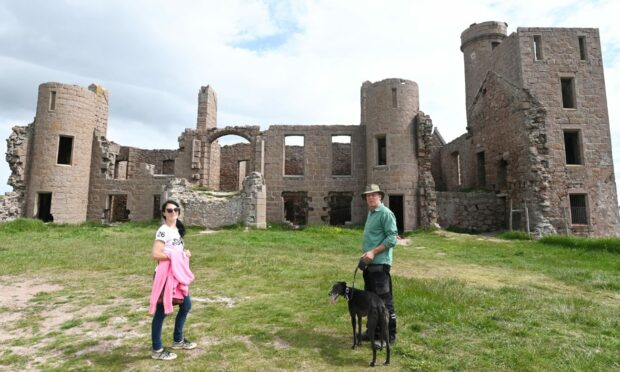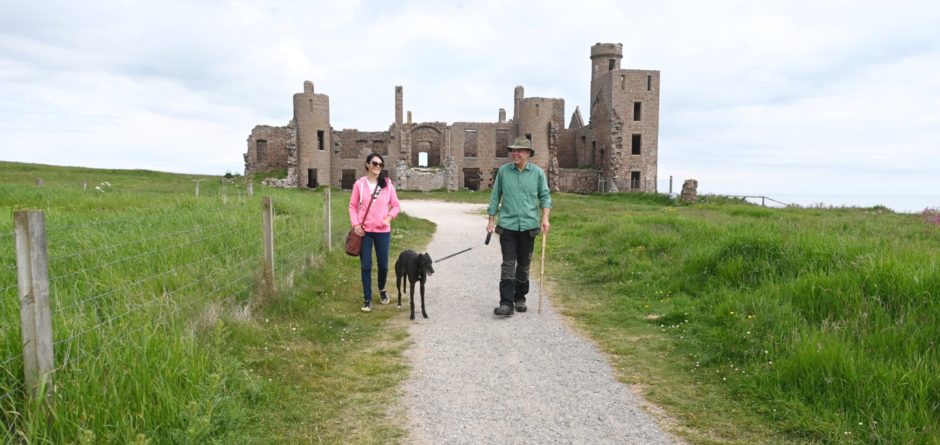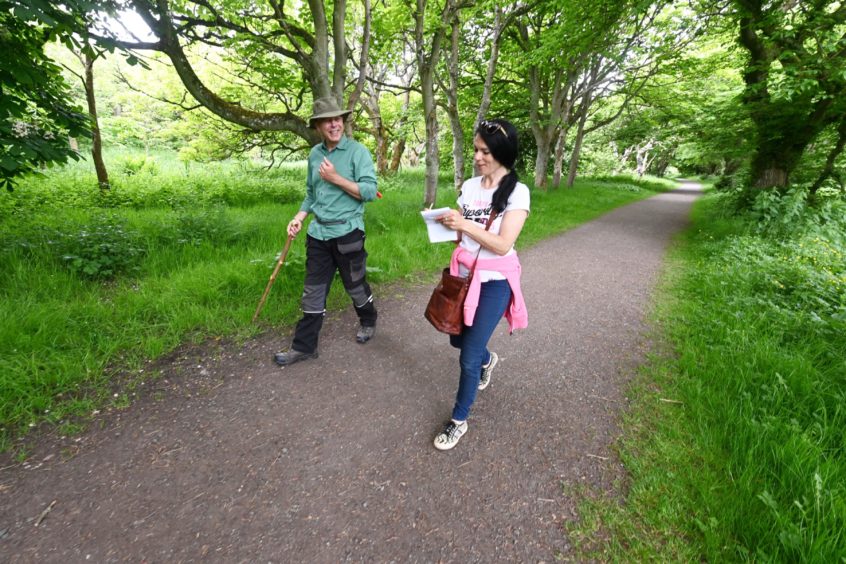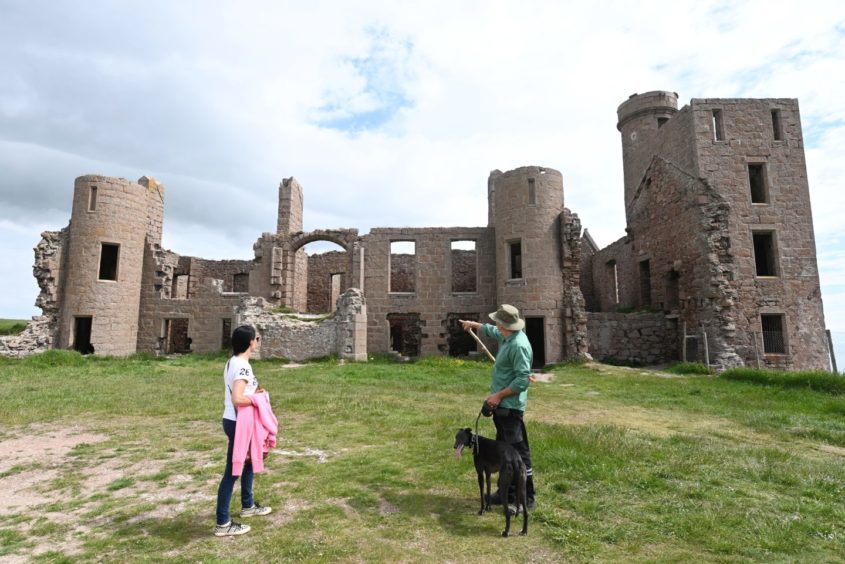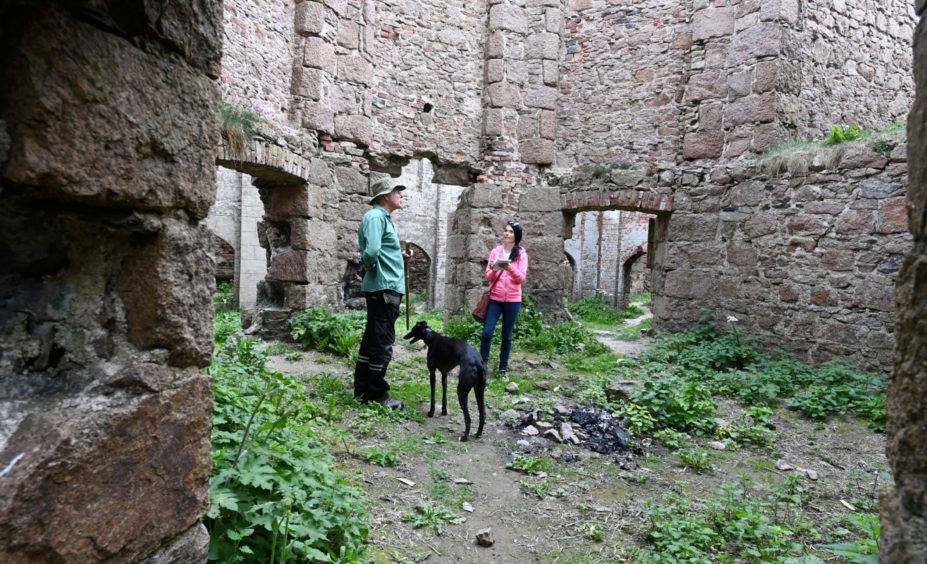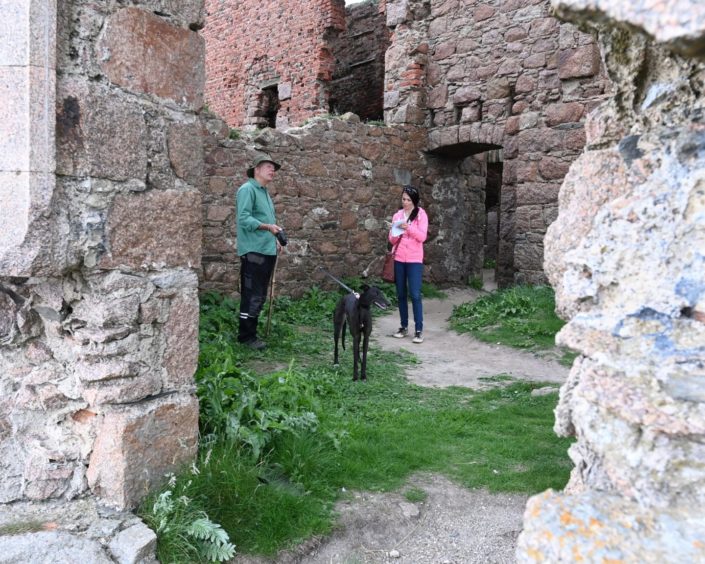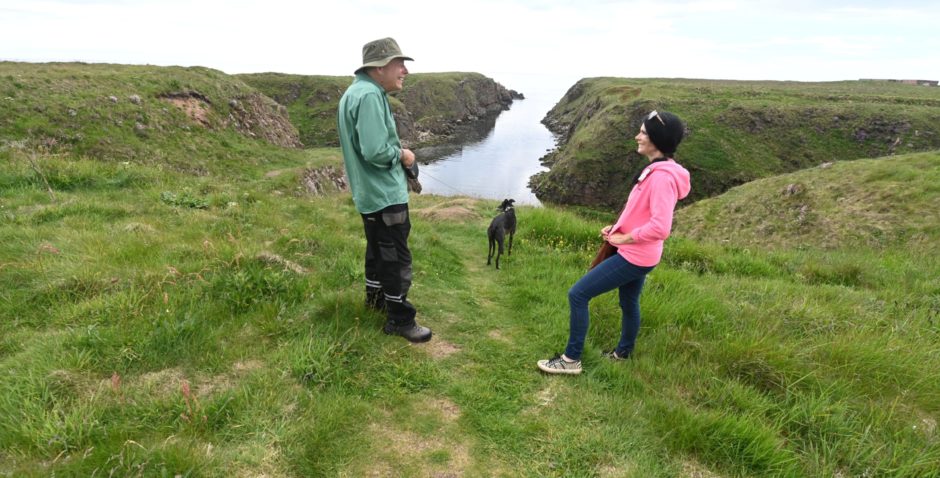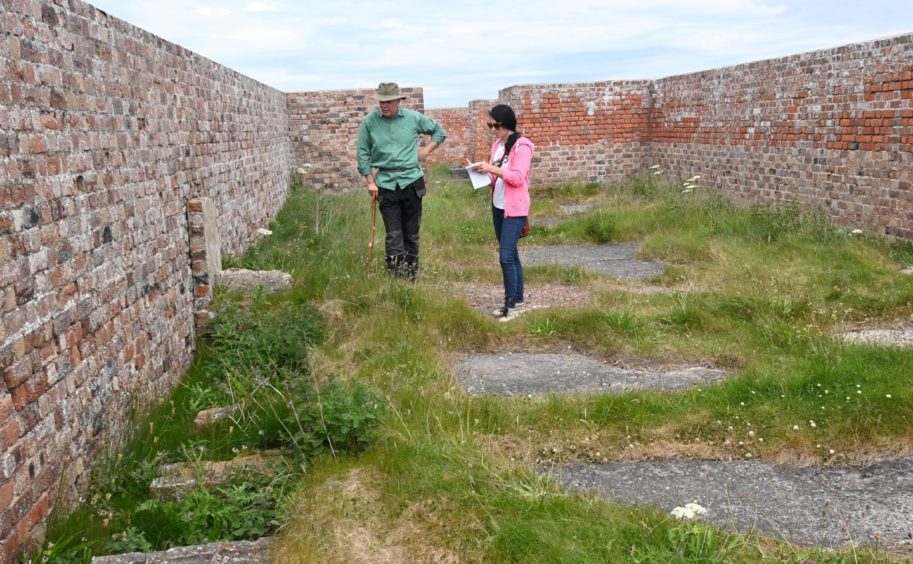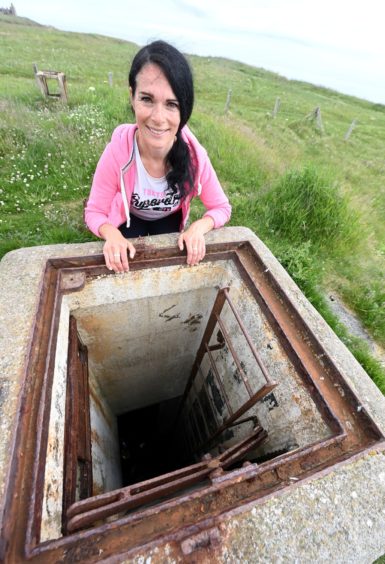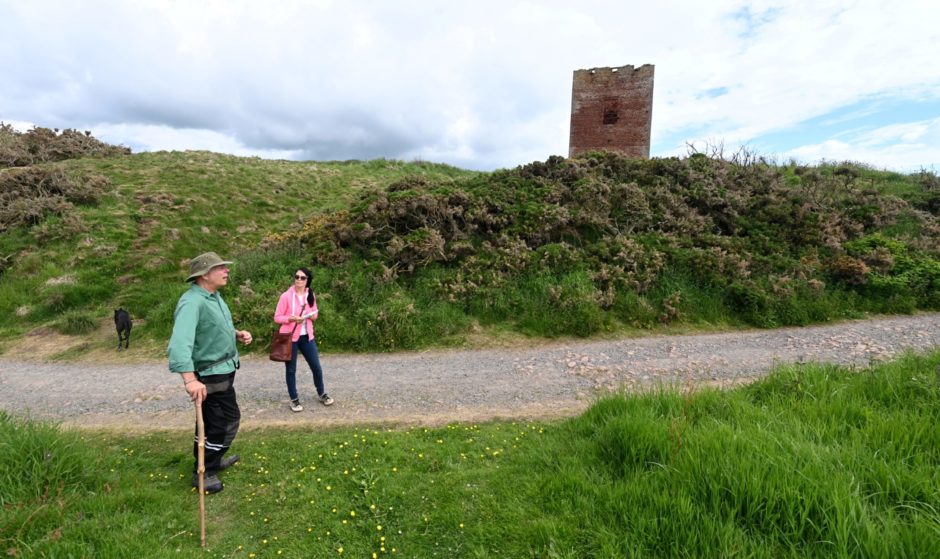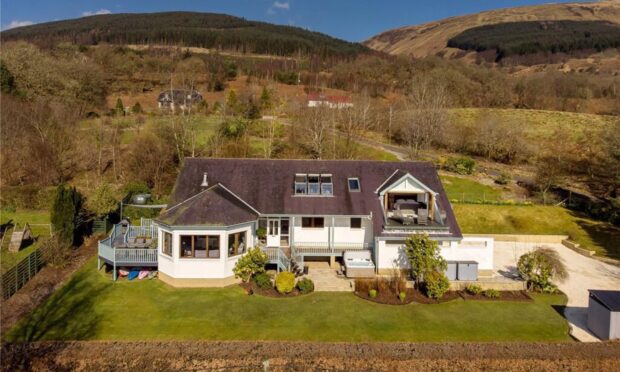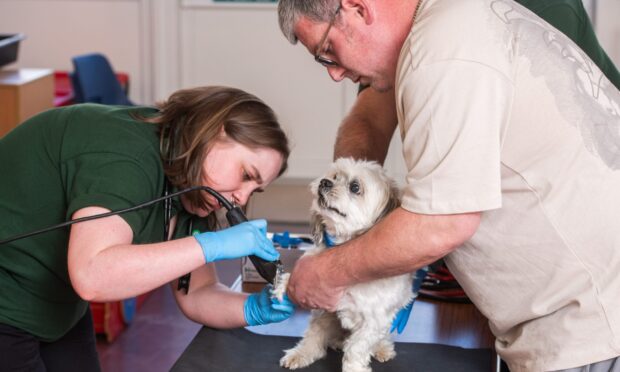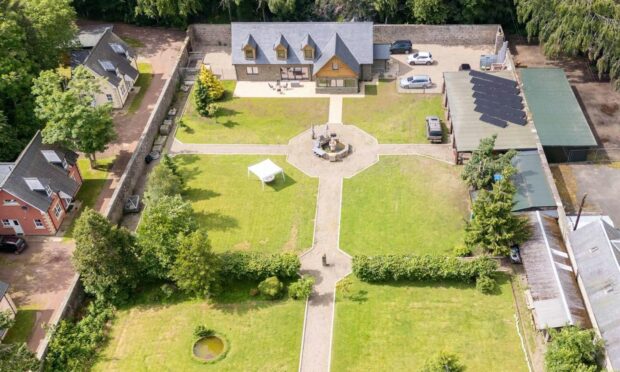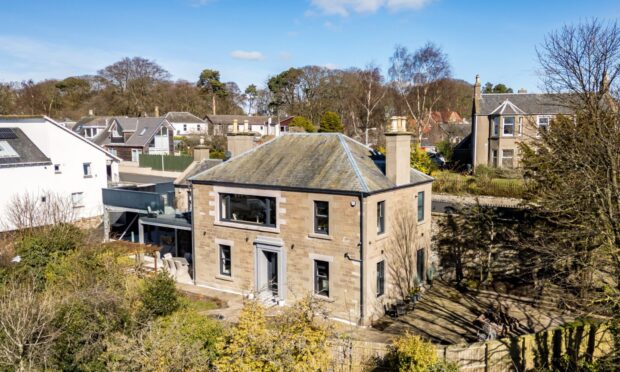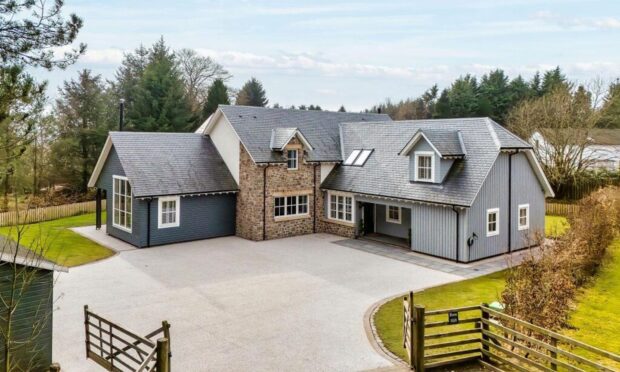The secrets of Slains Castle and a Cold War early-warning radio station are the focus of David Brown’s guided historic walk. Gayle checks it out.
The spectacular ruin of Slains Castle, perched on jagged clifftops overlooking the crashing North Sea, is said to have inspired Bram Stoker’s Dracula.
Built in the 16th Century, and expanded multiple times, its forbidding silhouette lures many people to explore its collapsed corridors, crumbling courtyards and towers.
I’ve been to Slains many times, once camping beside it and getting creeped out by the swirling mists and strange sounds emanating from within.
My recent visit, on a sunny June afternoon, shines a different light on things.
My companion is Aberdeenshire Council’s Formartine area ranger David Brown, who treats me to a preview of a guided walk he’s running on the secrets of Slains and a nearby early-warning radio station.
Meeting up in Cruden Bay, we stroll through a wooded gully, pass the remains of a decaying brick doocot, and then gaze down to a wildflower meadow, through which a small burn flows.
“There’s a secret mill there,” says David, pointing to an area of scrubby woods.
It’s hard to pick out but right enough, the remains of what was once a barley mill are hidden in the trees.
“That flat, open area, down by the burn-side, was once used as a skating pond,” says David. “It’s silted up now but isn’t that fantastic?”
As we walk, David’s greyhound Millie trots alongside us, occasionally stopping to cock her ear and listen for voles, mice or other unfortunate creatures.
The approach to the castle, which is actually called New Slains, is always awe-inspiring.
Now a jumble of walls, huge picture windows, towers, stone stairways to nowhere, cellars and unreachable turrets, it was once the grand reconstruction of 13th Century Old Slains Castle, a few miles along the coast.
New Slains was built in the 16th Century by the newly re-established Earl of Erroll, who had been banished after rebelling under the name of the Roman Catholic church while Old Slains was destroyed.
“It was 1597 when the 9th Earl of Erroll started New Slains castle – initially just a tower house after he returned quietly from exile,” explains David.
“Then in 1837 the 18th Earl, William George Hay, further extended the castle and faced it with granite. The architect was John Smith, or ‘Tudor Johnny’ as he was known, because he liked tall, Tudor-style chimneys.
“The 20th Earl, Charles Gore Hay, sold everything in 1916. It was completely asset-stripped, of its roof, windows… everything.”
While enjoying one of many holidays in Cruden Bay, Bram Stoker was invited by the 18th Earl to visit New Slains in 1894.
And while many people say it was the inspiration for Castle Dracula, David points out that back then, Slains wouldn’t have been in ruins; it was an imposing stately home.
“There is a connection, though. Early in the novel Dracula, Jonathan Harker is led into an octagonal chamber where he waits for the Count. There’s an octagonal chamber in Slains Castle. So I reckon the Earl invited Stoker for dinner and he was inspired by this unusual room.”
Gazing up at what would’ve been the grand main entrance, David says the original stone steps were removed when the castle was asset-stripped, and have graced the front of Aberdeen’s Music Hall ever since. Who knew?!
Inside, we explore all the rooms, David pointing out cellars – “these would’ve been packed with wine and champagne!” – the drawing room, library, Lady Erroll’s sitting room, billiard room, dining room, butler’s house and nursery.
The octagonal chamber, however, eludes us, and we wander round looking for it for a while.
“It’s strange in that it’s octagonal but the octagon is a recognised Freemason symbol,” reasons David. “Perhaps the Earl was a Freemason?”
Heading into the library, David explains that as the family became strapped for cash, they were forced to sell off their most valuable assets – books.
“Antiquarian books, medieval texts, 17th Century books – they replaced these with cheap sensations. Paintings would go next but land was the last thing they’d sell. I suppose you’d call it ‘genteel poverty’.”
Outside, we explore the old stables, smiddy and carriage house. Heading back along the coast, we pause at a deep gorge, which David reveals is called Watter’s Mou’, translated as “the water’s mouth”.
This spot was the inspiration for Stoker’s novella, The Watter’s Mou’, a romantic adventure story which ends in disaster.
Another novel Stoker penned while staying in Cruden Bay was The Mystery of the Sea.
“It’s got everything – secret agents, battleships, old women with second sight, romance, an American heiress,” beams David, clearly a fan.
Our final stop is Ward Hill, where the remains of an early-warning radar and radio station can be seen, once a line of defence during the Cold War.
“Between 1959 and 1991, Ward Hill provided early warning of approaching enemy aircraft and nuclear fall-out,” says David.
“It’s located in a very easterly part of Scotland, in a strategic position.”
Venturing inside the main building, there’s not much to see, other than brick walls.
Also visible on the headland are the remains of accommodation blocks, ventilation shafts and there’s even an access point to an underground bunker, which I peer into. It looks at least 100ft deep and I’d advise steering clear – it’s a long drop!
David’s walk is fascinating and utterly illuminating: I’ve learned so much.
The “full” version will include a detour to Port Erroll’s fishing nets and salmon bothy, and the option of refreshments at Kilmarnock Arms Hotel.
- Cold Castles, Cold Wars – a guided walk – on July 31 has sold out but there’s a waiting list and another event is being planned with date TBC. Hosted by David Brown, Alan Hay, of the Clan Hay Society, will also share his knowledge of the castle on July 31. Donations welcome. www.eventbrite.co.uk
